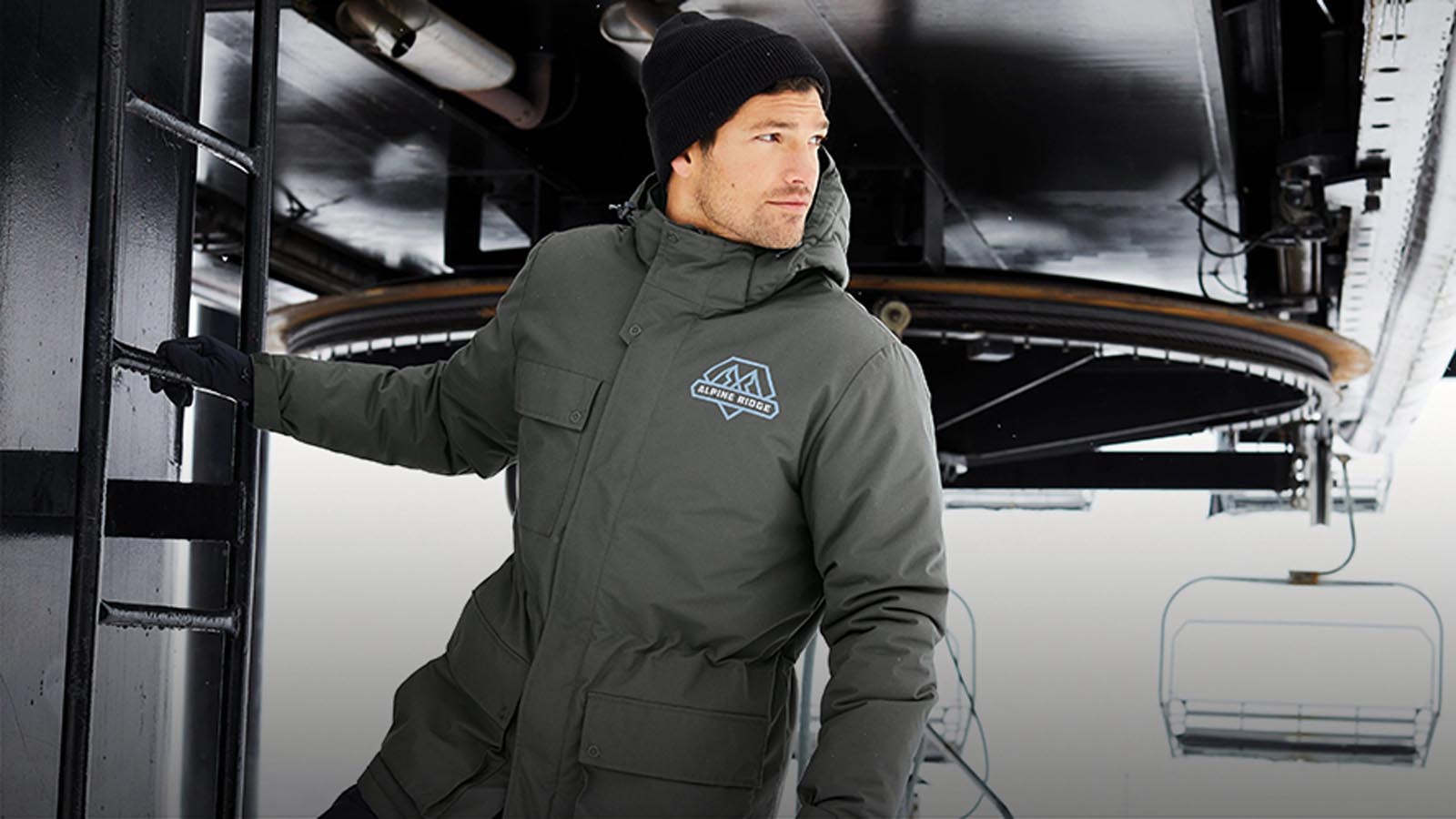Many people go their whole lives without learning how to layer for cold weather. That’s a dangerous oversight because underdressing during winter can lead to hypothermia – a dangerous drop in body temperature.
Your temperature will drop as heat escapes your body, and the outside cold seeps in and reduces your core temperature. The human body loses most of its heat through the hands, feet, and head, which is why you should cover these body parts during freezing weather.
In the U.S. alone, about 1,500 people die from hypothermia each year. Even if you don’t catch hypothermia, prolonged exposure to cold weather can lead to dry, flaky, and cracked skin. Fortunately, you can protect your health and skin by dressing in layers. Follow our step-by-step guide below to learn the layering basics and proper dressing for when the temperature falls below 50 degrees Fahrenheit.
Layer 1: Under Layer
The best layering method requires wearing an under, middle, and outer layer. The under layer (also called the base or inner layer) goes over your underwear, and its primary function is wicking sweat off your skin.
During winter, a base layer for removing sweat is crucial because leaving sweat on your skin will make you colder and increase the risk of hypothermia. Your inner layer will consist of a shirt (preferably a long sleeve shirt) and leggings for the lower part of your body. If you prefer, you could opt for a one-piece, long underwear.
Note that your under layer will only do its job correctly if you wear clothing made with the right material. Cotton is a popular choice for under layers because it is breathable and absorbs moisture. That means it will absorb your sweat and keep you cool beneath all your other layers of clothing.
However, wearing 100% natural cotton has some downsides. The biggest one is cotton retains moisture, and wearing sweat-soaked clothing in winter will only make you colder. Also, cotton can retain odors and takes a while to dry. A better option would be wearing an under layer made with a blend of cotton and a moisture-wicking fabric like polyester.
For example, our Gildan DryBlend 50 Cotton/50 Poly Long Sleeve T-Shirt features a 50% cotton and 50% polyester fabric blend. The cotton absorbs moisture, while the polyester facilitates quick moisture evaporation to keep you dry and cozy. Another option is our District Perfect Tri 3/4-Sleeve Raglan made with 50% polyester, 25% rayon, and 25% combed ring-spun cotton.
Other fabric blends that are ideal for under layer clothing are:
- Cotton and nylon blends
- Cotton and lycra blends
If you prefer wearing 100% natural fabrics in winter, you can try Merino wool – a breathable and lightweight material that does not retain odors. The fabric’s lightness and thinness also facilitate moisture-wicking and quick-drying to protect you against the cold. Lastly, Merino wool’s softness feels fantastic on the skin when worn as an under layer.
Note that your under layer should be a snug fit. Otherwise, you may have trouble wearing your middle and outer layer over it.
Layer 2: Middle Layer
During winter, you need to minimize body heat loss. An effective way to accomplish this is by wearing insulated clothing over your upper body. The insulated clothing will encapsulate you, trap the heat your body radiates, and use that same heat to warm you.
You will wear your insulating layer or middle layer over your base layer. Middle layers made with synthetic or natural materials are available, and the best fabric options include:
Polyester Fleece
Polyester fleece is a synthetic fabric made from lightweight plastic fibers like polyethylene terephthalate (PET). The fabric’s lightness makes it comfortable to wear, especially when layering. Also, since polyester fleece is breathable and moisture-wicking, you can avoid overheating and excessive sweating when dressed in layers.
Even better, polyester fleece can keep you warm in wet weather, and the fabric dries quickly. Depending on how cold it gets in your area, you can opt for a lightweight, mid-weight, or heavyweight polyester fleece middle layer. Choose a lightweight middle layer during 40 to 49-degree Fahrenheit weather, and upgrade to heavyweight clothing when it’s below 20 degrees Fahrenheit.
However, since it’s breathable, polyester fleece isn’t very wind-resistant. Cold winds entering the fabric can steal body warmth, which is why you need to wear an outer layer over your middle layer. If you need high-quality 100% polyester fleece jackets, check out our unisex Port Authority Value Fleece Jacket.
For optimal warmth, try our Port Authority Charger Jacket. The polyester Taslan heavyweight jacket has polyester fleece body lining and sleeve lining that keeps out wet weather and cold winds.
Down Insulated Jackets
Down-insulated jackets are plush and soft. The plushness comes from the jacket having an inner layer padded with fluffy and warm duck or geese under feathers. Besides being soft, duck or geese under feathers are excellent insulators that capture warm air in thousands of tiny air pockets. These air pockets stop your body heat from escaping and use the same heat to keep you warm in cold weather.
High-quality down-insulated jackets also offer impressive wind protection, thanks to their wind-resistant outer shell. However, down-insulated jackets are not ideal for wet weather. If the jacket gets wet, it will become heavy and lose its insulation efficiency. Even worse, down-insulated jackets do not dry quickly.
Synthetic Insulated Jackets
Unlike down jackets, which use natural insulation materials, synthetic jackets insulate the wearer with artificial materials. The latest synthetic insulated jackets can offer almost as much warmth and comfort as quality down-insulated jackets. However, down insulated jackets are lighter than synthetic jackets and compress more easily for folding and packing.
On the upside, synthetic insulated jackets are cheaper and offer better water protection than down jackets, making them a better option for wet, chilly weather.
Besides polyester fleece and down and synthetic insulated jackets, other products that can serve as good middle layers are wool and wool-blend vests and hoodies. Lightweight wool or fleece pants that won’t hinder movement are a good option for insulating layer pants.
Layer 3: Outer Layer
The final layer or outer layer goes over every other layer you have worn and serves as a shell or cocoon that shields you from snow, wind, and rain. Various outer layer options are available, including heated options that can keep you warm with battery-powered heating elements. If you would prefer your outer layer to be less high tech, you can choose one of the following:
Waterproof Breathable Jackets
A waterproof jacket isn’t the same as a water-resistant jacket. While a waterproof jacket repels all moisture, keeping you completely dry and warm in rain or snow, a water-resistant jacket only partially keeps out moisture.
Wearing a waterproof jacket will ensure that zero wind or water reaches your inner layers, keeping you cozy. If the jacket is breathable, it will minimize sweat and keep you cool, ensuring that you don’t end up overheating under multiple layers of clothing.
An example of a high-quality waterproof breathable jacket is our Port Authority Packable Puffy Jacket. Its water-repellent fabric makes it ideal for working outdoors, and its 100% polyester shell and polyfill insulation ensure warmth in extreme weather.
Water-Resistant Breathable Jackets
Water-resistant jackets can keep you comfortable in cold, windy weather with less sleet, snow, or rain. They cost less than waterproof breathable jackets, and the quality usually depends on the jacket’s fabric blend.
If you need a reliable and breathable water-resistant coat, check out our Port Authority Core Soft Shell Jacket. It has a 100% polyester woven shell and polyester microfleece lining that makes the jacket highly durable yet soft and comfortable. Alternatively, try our Clique Hudson Jacket if you prefer puffer coats. It has a removable snap hood and can keep you warm in weather between 5 and 50 degrees Fahrenheit.
Soft Shells
Soft shell jackets prioritize breathability and typically feature a soft outer shell made with a stretchy fabric. We recommend wearing such jackets for outdoor athletic or aerobic activities on cold days. Top-quality soft shell jackets, like our Port Authority Active 1/2 Zip Lightweight Soft Shell Jacket, will also provide light rain and wind protection.
Waterproof Non-Breathable Jackets
Non-breathable jackets cost less than breathable jackets, but you might not find them comfortable if you exert yourself while dressed in layers. That’s because the jacket’s lack of breathability won’t allow air to circulate beneath, and you may find yourself sweating and overheating beneath your other layers.
As such, only wear a waterproof non-breathable jacket if you intend on engaging in only light to no activity when dressed. Regardless of the outer layer jacket type you choose, ensure it has zippers or vents.
If you start feeling uncomfortably hot beneath the outer layer, you can easily open the zipper or vents to let in cool air and get comfortable. Without a zipper or vents, you may have to take off the jacket, which may expose you to unsafe extreme temperatures.
Waterproof Pants
Your legs need just as much protection as your upper body, so don’t forget to wear an outer layer of waterproof or water-resistant pants before stepping out. Quality snow pants can keep you warm and dry when worn over under and middle-layer pants. However, if you don’t intend on spending time in the snow or rain, you can wear regular jeans or other thick casual pants over your long underwear.
Don't Lack on the Gloves, Socks, or Hats
A how-to layer for cold weather guide won’t be complete without discussing how to protect the parts of your body that release the most heat – your hands, feet, and head. Here’s how to keep your hands, feet, and head from getting cold.
Headwear
A baseball hat or fedora won’t protect your head from extreme weather. Go for a hat with a warm fabric, like wool, that can keep your head snug and reduce heat radiation. Try our 100% polyester Sportsman Sherpa Lined 12-inch Knit or acrylic shell and polyester fleece New Era Colorblock Cuffed Beanie. If you want more protection, opt for headwear that has earflaps.
Face Cover
You can shield your face and neck from cold winds with a wool scarf or wear a balaclava.
Footwear
Wool and fleece are good choices for winter socks because they offer impressive insulation and moisture-wicking. If you are going out in below zero weather, wear two to three layers of thick socks and insulated water-resistant or waterproof shoes.
Gloves
Leather gloves may look nice, but they do not offer the best protection in cold weather. Waterproof and breathable wool gloves or mittens are better because they provide superior insulation.
If you follow these layering basics, you can maintain a stable, safe, and comfortable body temperature while outside in the cold.
Bundle up with Thread Logic Today
Don’t forget to layer based on the temperature outside. If the weather is between 40 to 49 degrees Fahrenheit, you can wear light outer, middle, and under layers. During 20 to 39 degrees Fahrenheit weather, stay warm with a heavy underlayer followed by an insulating middle layer and a waterproof breathable shell jacket.
Now that you know how to layer for cold weather, shop for quality winter clothing for you and your team or family and friends. At Thread Logic, we have over two decades of experience delivering top-notch custom embroidered cold weather clothing to businesses and individuals. Check out our samples and contact us to place an order.


